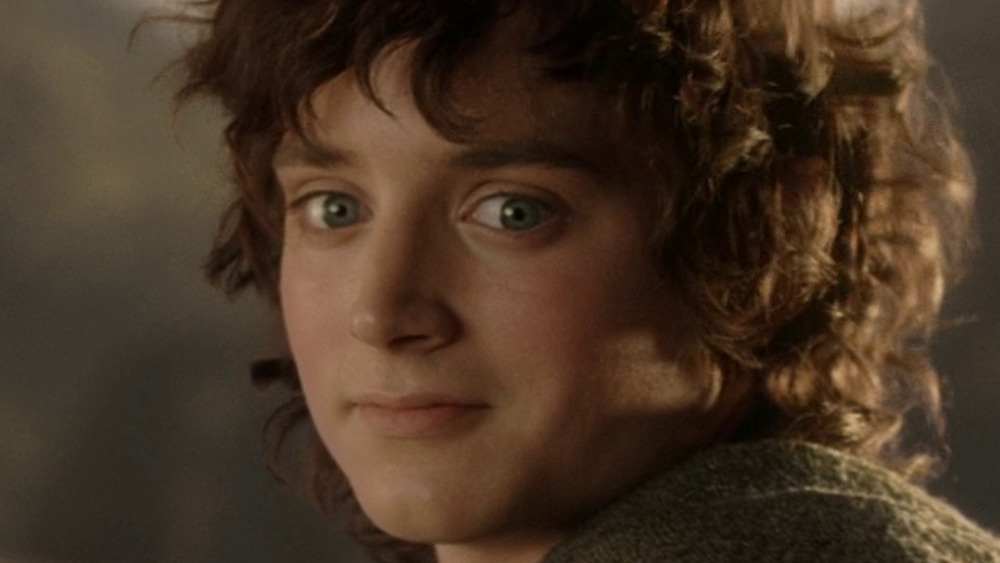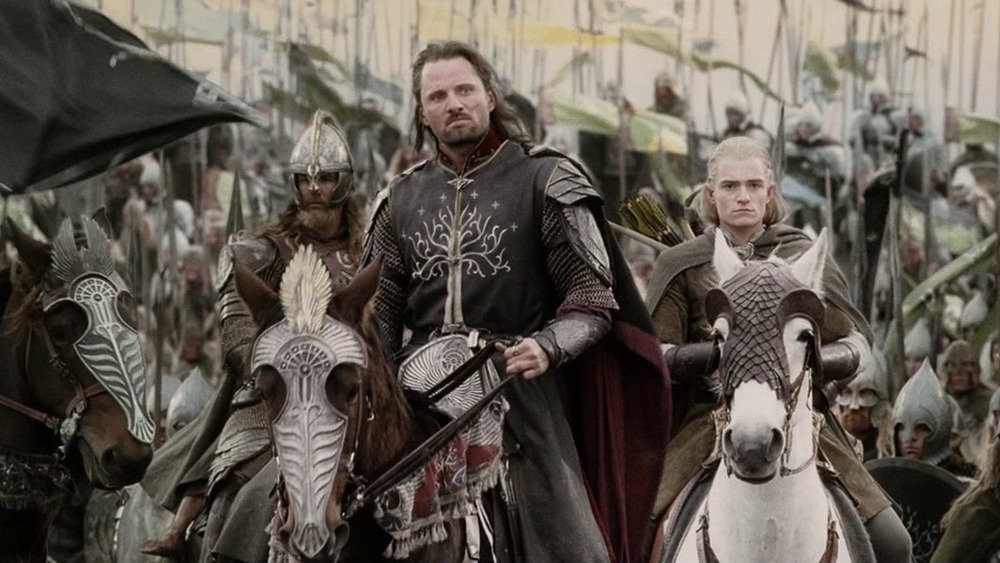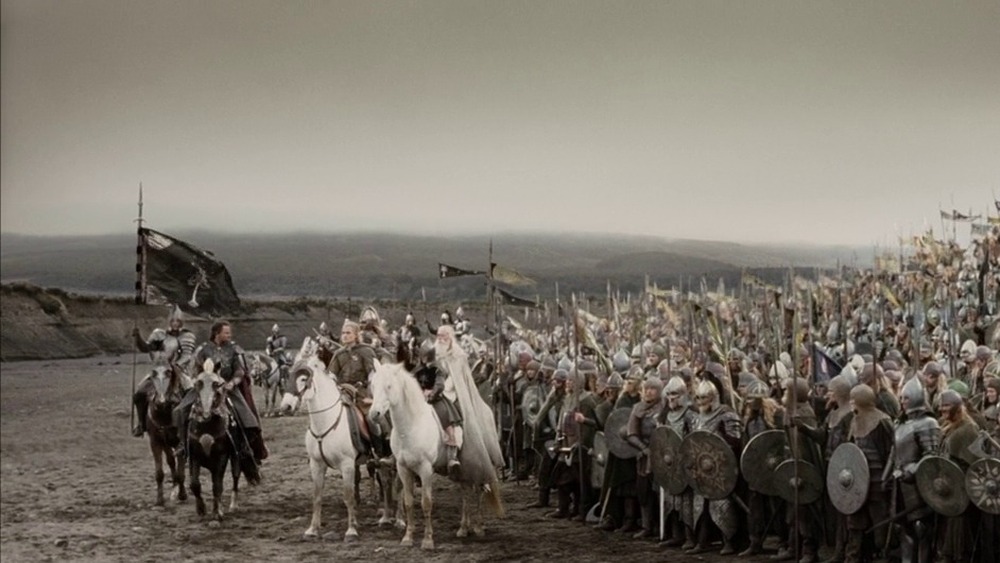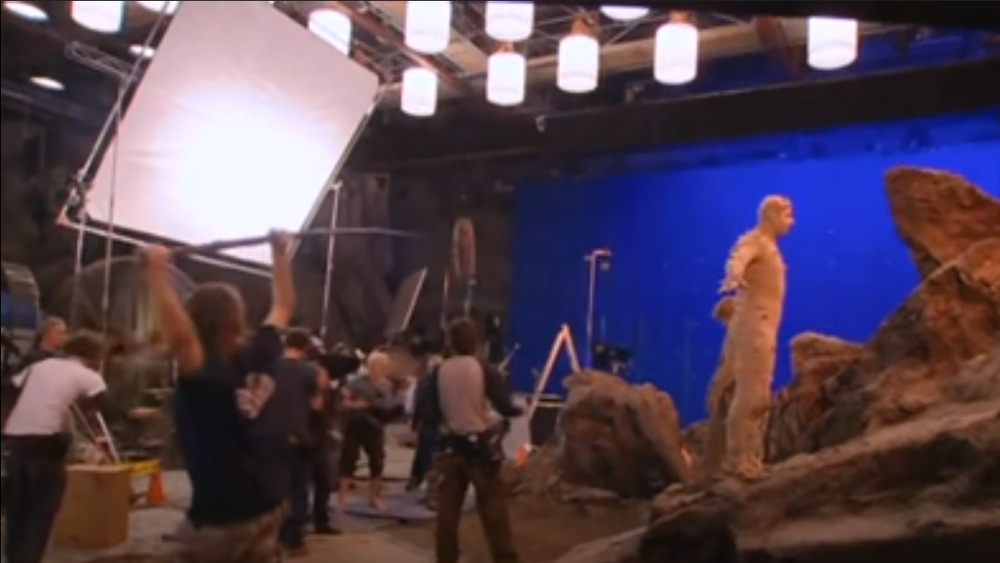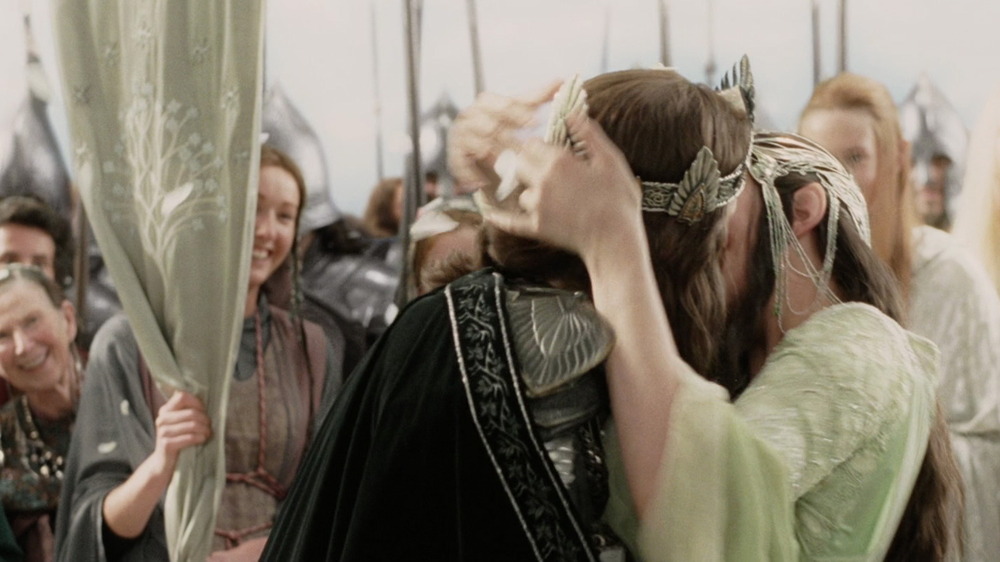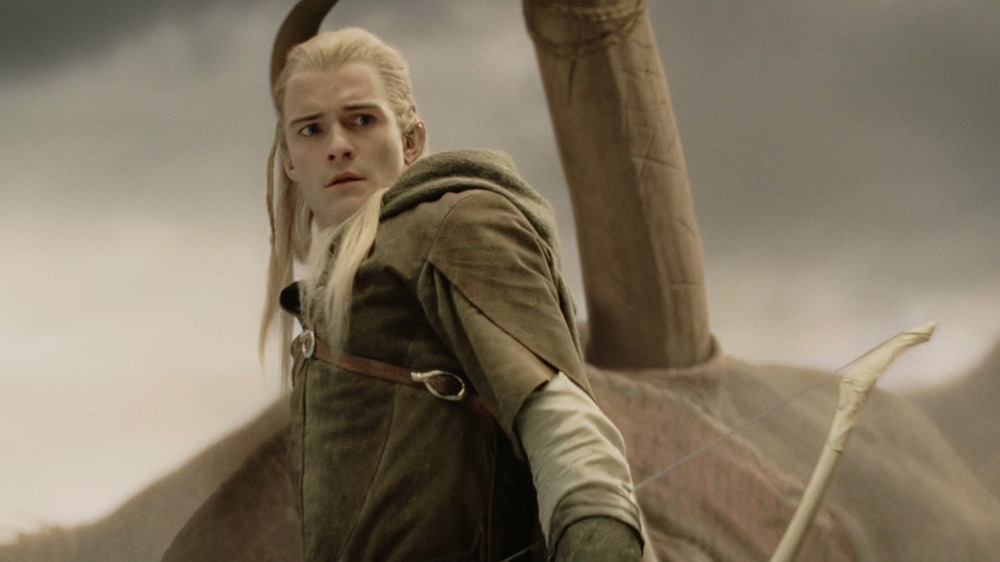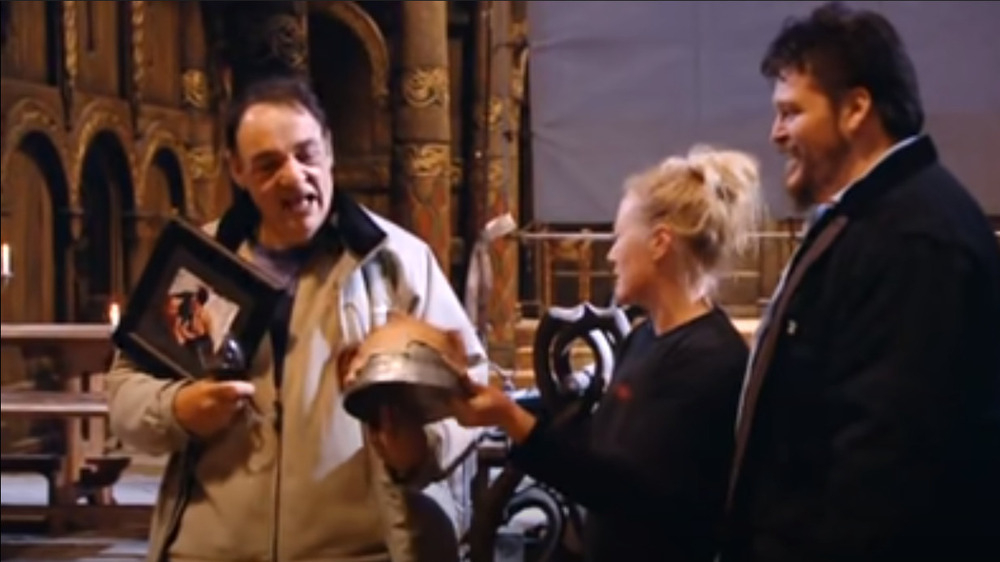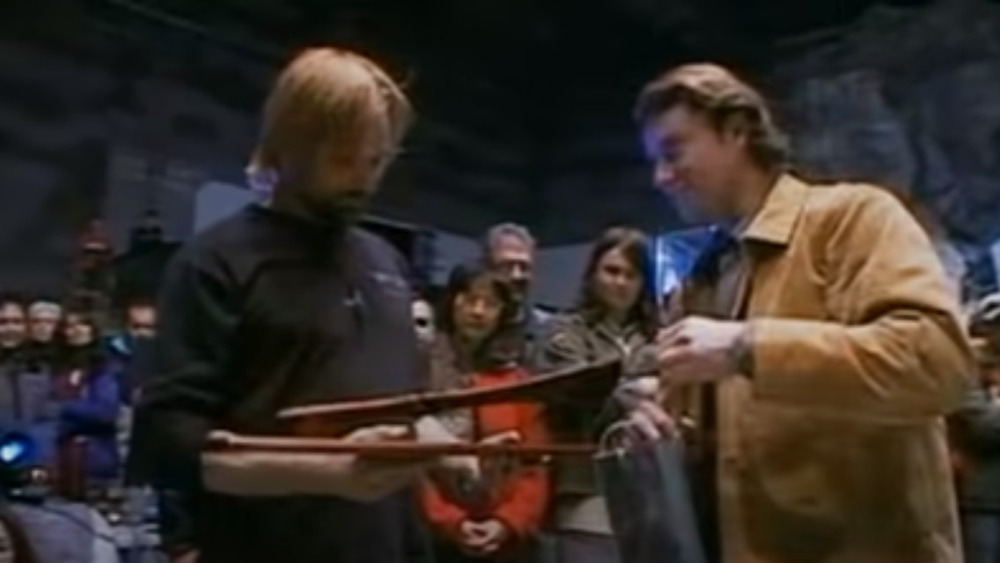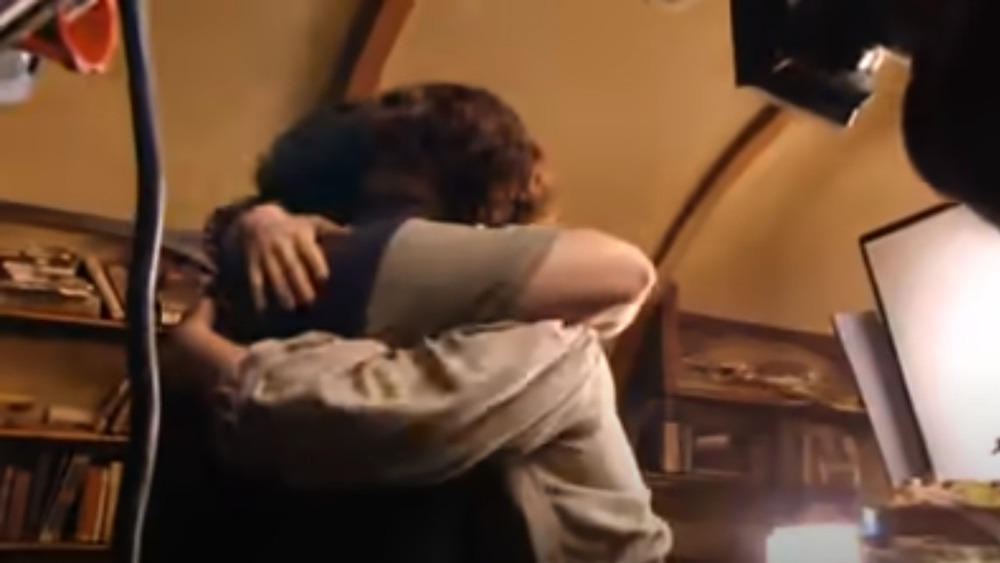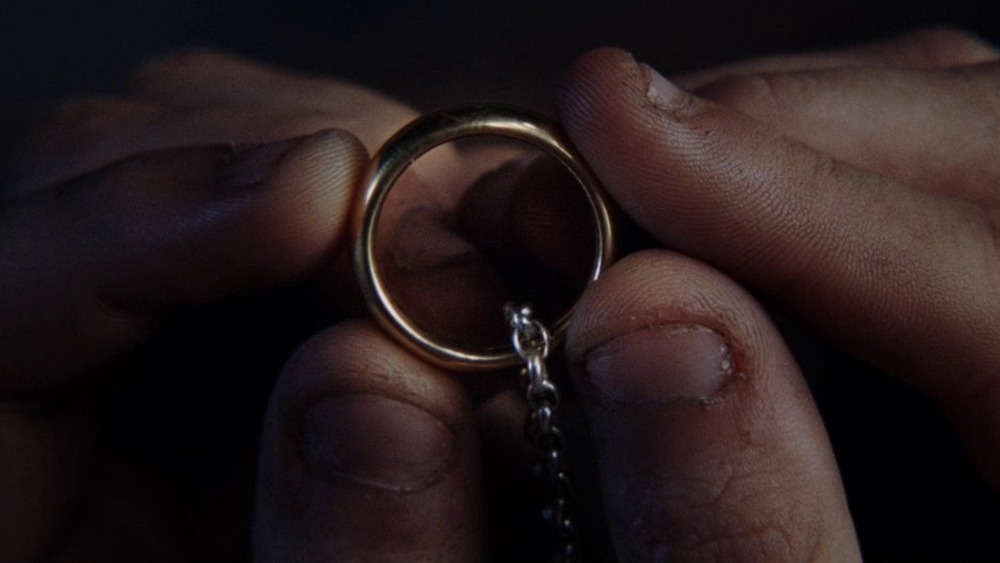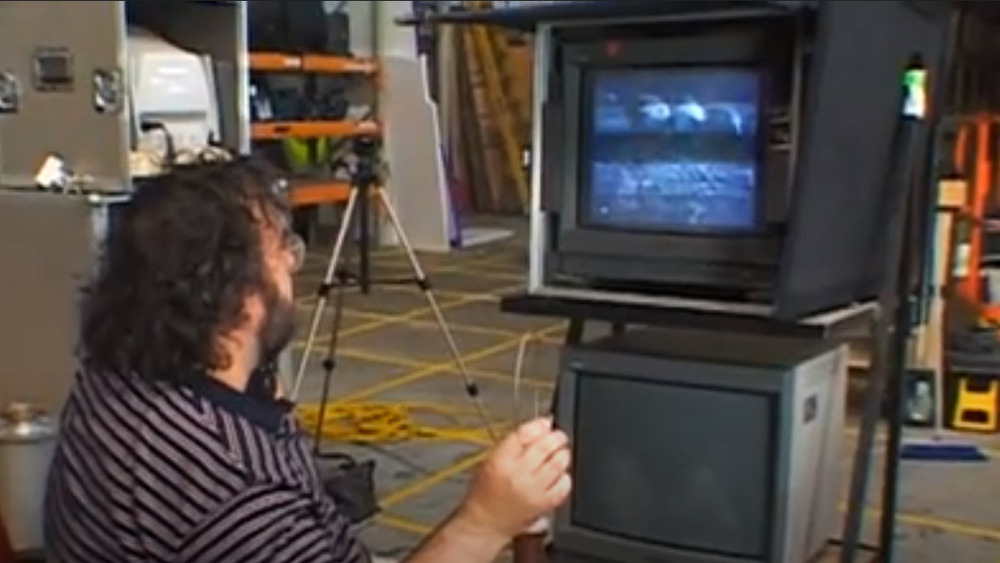What The Final Days On The Set Of LOTR: The Return Of The King Were Like
In December 2003, The Lord of the Rings: The Return of the King arrived, completing the acclaimed Lord of the Rings trilogy and putting the cap on one of the defining film sagas of the era. For fans, it was the end of a year in waiting, following the blockbuster success of The Two Towers. For director Peter Jackson and his cast and crew, it was the end of a production process that included photography extending all the way back to 1999 — plus years of scripting and pre-production before that.
Because of this lengthy journey, the final days of working on The Return of the King were emotional ones, packed with moments the cast and crew would later recall in great detail. Luckily for fans, behind-the-scenes documentaries, interviews, and featurettes give them a front-row seat to what it was like to finish one of the most beloved fantasy films of all time. Here's a look back at what the last days on The Return of the King's set were like, from the people who lived it.
Production actually ended twice
The scale of production on all three Lord of the Rings films is legendary. The three films were shot simultaneously, over the course of 14 months in 1999 and 2000, across director Peter Jackson's native country of New Zealand. This meant that the cast and crew had become quite close by the time they reached the end of the grueling shoot. It also meant that the end of principal photography on December 22, 2000 felt like a lasting goodbye, fraught with meaning. It wasn't.
Though they didn't know it at the time, Jackson and company would end up filming significant amounts of "pick-up" footage for the trilogy. This meant the entire cast and crew would reunite in New Zealand ahead of the completion of the films to shoot new footage, improving existing scenes and fleshing out others. This happened one last time in the summer of 2003, just six months before The Return of the King was due to be released in theaters. Behind-the-scenes footage of these final moments of shooting reveals high emotion, humor, and nostalgia. Indeed, one of the defining features of making The Return of the King turned out to be saying an emotional goodbye not once, but twice.
Directing on a massive scale
The Lord of the Rings producers originally hoped to complete every last bit of shooting during principal photography, without the use of pick-up scenes. But the sheer scope of the production meant that couldn't be achieved by one director using one set at a time. There was simply so much shooting to do, and production had to finish before Christmas of 2000 — there was no way to get it done in the course of a normal work day. So, things scaled up.
"I think we'd gotten to the point where there were seven units shooting seven days a week, 24 hours a day, meaning camera was always rolling," executive producer Mark Ordesky recalled.
This meant some pretty wild "crunch time," as Elijah Wood put it, for the cast and crew. Viggo Mortensen recalled doing more than half a dozen costume changes in a single day of playing Aragorn in the final weeks of the shoot. Jackson watched several video feeds at once, and shuttled between sets on a bicycle. At one point, he even filled in for Sean Astin's stunt double when he didn't like the look of a shot. When you see Sam's arm enter the frame, holding Sting to battle Shelob, you're seeing Peter Jackson's hand: After the director biked between sets to correct the shot, he put on Sam's costume and played the part himself.
A motion capture breakthrough
One of the defining features of the The Lord of the Rings trilogy turned out to be Andy Serkis' portrayal of Gollum. This performance, created using motion capture, proved to be a breakthrough for that particular visual effects art, and set a standard filmmakers (including Serkis himself) have been working to top ever since. But even within the bounds of the making of the trilogy, the filmmakers pushed for a particular breakthrough on The Return of the King that they didn't achieve during principal photography.
Though they'd already shot much of the sequence in which Gollum tussles with Sam and Frodo on the slopes of Mount Doom, Jackson wanted to reshoot some of it during pick-ups, so a new set was built to recreate the rocky environment. To save time, producer Barrie Osborne also pushed for something else in pick-ups: Shooting Serkis' motion capture at the same time. Previously, while Serkis had been on set and in character as Gollum for all of his scenes, the actual motion capture had been filmed separately, on a blue-screened soundstage. This meant Serkis had to perform and be directed twice. In June 2003, the two performances merged for the first time, eliminating the need for Serkis to recreate his performance later, without his co-stars.
A different kind of kiss
Another sequence Jackson hoped to revisit through pick-up shoots was Aragorn's coronation as King of Gondor, including the kiss that seals the love between Aragorn and Arwen at the end of the film. Though they'd already shot the sequence in principal photography, much of it was rushed, to the point that in one strained moment, Liv Tyler had to actually demand that Viggo Mortensen be present for the kiss itself after producers suggested she shoot it with his stunt double.
The pick-up shoot gave Jackson and his actors more time to work on the scene, and, as a result, more time to reflect on the emotional nature of the moment. It was during these reshoots that Jackson realized the kiss between Aragorn and Arwen was actually too restrained, and that a more moving way to depict it would be as a break with the protocols of the somber moment. Thus, the two characters are overcome with love and wrap each other up in a sweeping embrace.
An elf loses his weapon
Pick-up shoots are common in filmmaking, particularly for big-budget films with a lot of moving parts and plenty of visual effects. So it wasn't strange that the Lord of the Rings crew reunited in New Zealand in 2003 to shoot more footage for The Return of the King. Because this particular group of people had been working, to some degree or another, on the same three movies for four years at that point, though, the pick-up shooting days carried a lot of meaning — and that meaning extended to every detail of the shoot.
For Orlando Bloom, who played the elf archer Legolas, the emotional toll began to sink in during the penultimate take on what would be the last thing he shot for the trilogy: A fight sequence alongside Gimli the dwarf. In the middle of the take, Bloom's bow, which he'd carried with him for 18 months, broke unexpectedly. Surprised and emotional, Bloom walked over to Jackson and his partner and co-writer Fran Walsh to break the news. As he recalls, "They were like 'Wow, well, I guess it's coming to the end then, eh?"
Burning a (fake) face
Every member of The Lord of the Rings' main cast had to endure a certain level of hardship to make these movies, whether we're talking about early call times, fight training, or, in the case of several actors, prosthetic application. Even among his cast-mates, though, John Rhys-Davies struggled with a particularly nasty problem: The legendary actor was allergic to the prosthetic pieces he had to wear as Gimli, so much so that his face would redden and swell every time he had to wear them.
Still, Rhys-Davies soldiered on, powering through day after uncomfortable day wearing Gimli's face, until his last shooting day finally arrived. As he was enjoying a glass of wine to celebrate, make-up and prosthetics wiped away, the crew presented Rhys-Davies with a gift: His final Gimli mask, ready to burn in a fire they'd lit nearby.
"Welp, there goes my career," Rhys-Davies joked as his mask burned.
Aragorn's last ride
Every member of The Lord of the Rings cast received their own special goodbye after returning to New Zealand in 2003 for pick-up shoots, but among the most memorable came on the final day of shooting for Viggo Mortensen as Aragorn and Bernard Hill as Theoden.
The festivities began when the crew got the idea to drive Mortensen's makeup trailer, actually a converted bus, from its spot on the lot all the way into the studio where the rest of the crew was waiting. Once there, they were greeted by The Lord of the Rings stunt team, who presented both actors with gifts and honored them as "warriors" and "kings." To complete the honor, the stunt team, many of them Maori performers, performed a haka for Hill and Mortensen. Footage of the event shows the emotion on the faces of both actors as they watch the haka unfold. When it was over, Mortensen approached the stunt performers to thank them, and gave a headbutt to the first performer he reached, then another to the second. That's when he realized he'd have to headbutt every single member of the stunt team to say goodbye.
"It's a good thing I wasn't shooting the next day," he later joked.
The last shot
Production schedules on film shoots are usually put together by producers based on logistics, not emotion. Few films are shot entirely in sequence, and very often, actors find that the final thing they shoot isn't an emotional moment within the film. This was not the case with what turned out to be the final shot filmed for The Lord of the Rings: The Return of the King.
The last day of pick-up shooting in the summer of 2003 was focused on Frodo, with the last shot being the moment Frodo completes his chronicle of his adventure in the book Bilbo left for him, which he will pass on to Sam. That meant Elijah Wood and director Peter Jackson were left to work on a single moment together, at the end of what amounted to nearly five years of work.
It was an extraordinarily emotional day, and the cast and crew assembled to watch the filming officially end knew it. They soon realized that Jackson kept asking for more takes because he didn't actually want the making of the film to be over. "I think all of us really just wanted to keep doing more and more takes," Jackson said. Saying goodbye was that hard.
When it finally ended, Wood and Jackson embraced, weeping and thanking each other for the journey of making the film together.
Ring-bearers forever
The final days of pick-up shooting were what Peter Jackson later described as a long series of goodbyes, as each member of the cast completed their last shots for The Return of the King. Every farewell was momentous, complete with toasts, gifts, and speeches as the cast paid tribute to the crew and vice versa.
This meant, among many other things, that the cast members were presented with gifts, and those gifts were very often memorable props from their time making the film. Numerous cast members, including Ian McKellen and Elijah Wood, were given their characters' swords to take home. Costume elements were also popular: Wood received his final pair of Hobbit feet, Miranda Otto, who played Eowyn, received her character's silver belt, and Liv Tyler got one of Arwen's gowns.
When it came to the copies of the One Ring itself, though, only two members of the cast were granted them. In the end, both of the trilogy's Ring bearers, Andy Serkis and Elijah Wood, were sent home with their own Ring.
One more shot
The Lord of the Rings: The Return of the King was released in December 2003 to rapturous reception from both fans and critics. The film ultimately grossed more than $1 billion worldwide. A little more than two months later, in February 2004, the film swept all of its categories at the 76th Academy Awards, winning 11 Oscars including Best Adapted Screenplay, Best Original Score, Best Original Song, Best Director, and Best Picture. It remains tied with Titanic and Ben-Hur as the most-awarded film in Oscars history.
But even after all of that, there was somehow still work to be done. Weeks later, Jackson was back in New Zealand assembling the Extended Edition cut of The Return of the King, when he realized he was actually missing a shot needed for the Paths of the Dead sequence. So, with the help of a few crew members, Jackson put together a patch of dirt and a few fake skulls on a soundstage, and filmed an insert shot of a skull avalanche close-up for the scene. So as it turns out, The Return of the King wasn't really finished until almost three months after it premiered.
"That's the best thing to do: Win the Academy Award for Best Movie before you finish shooting the last shot," Jackson joked.
